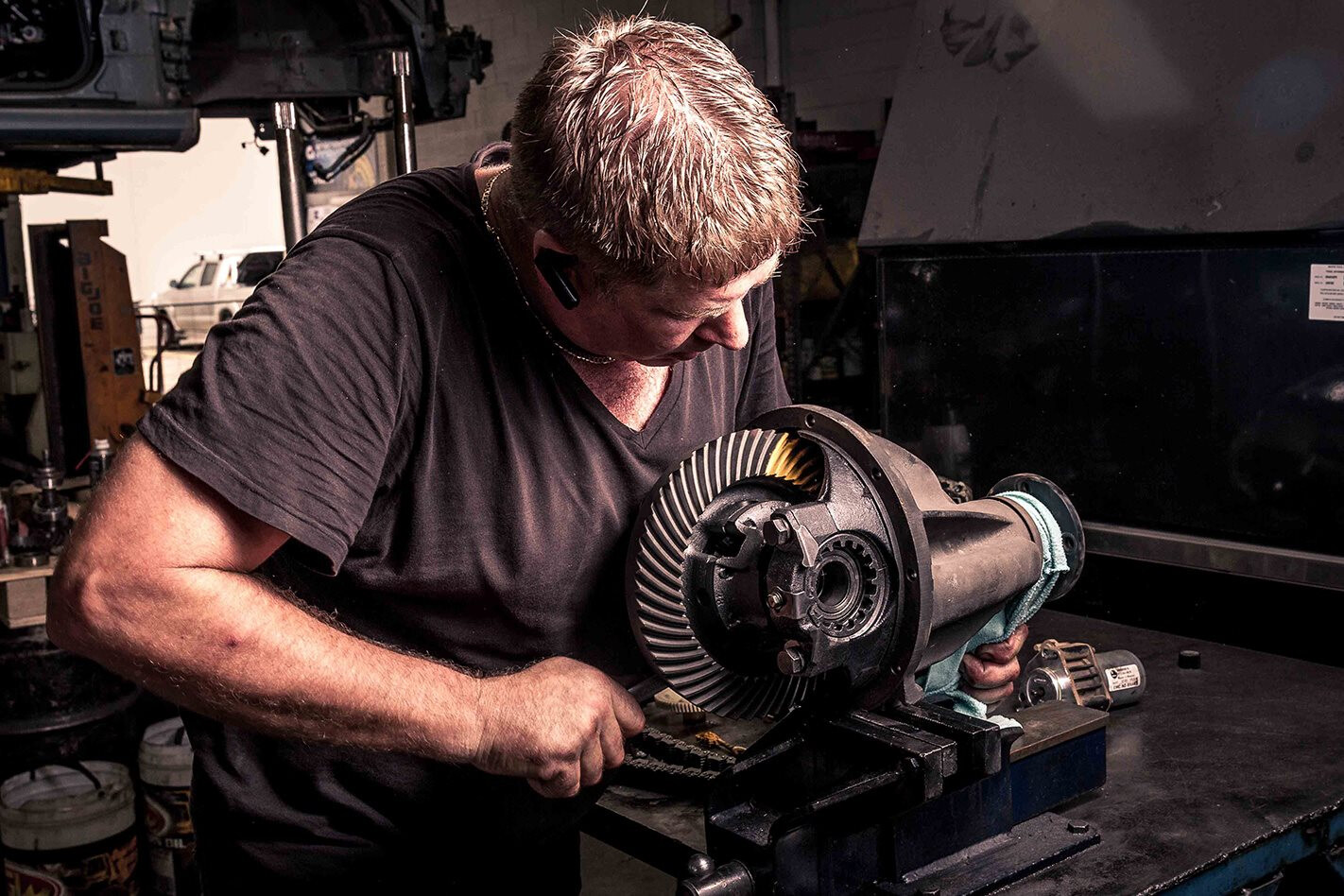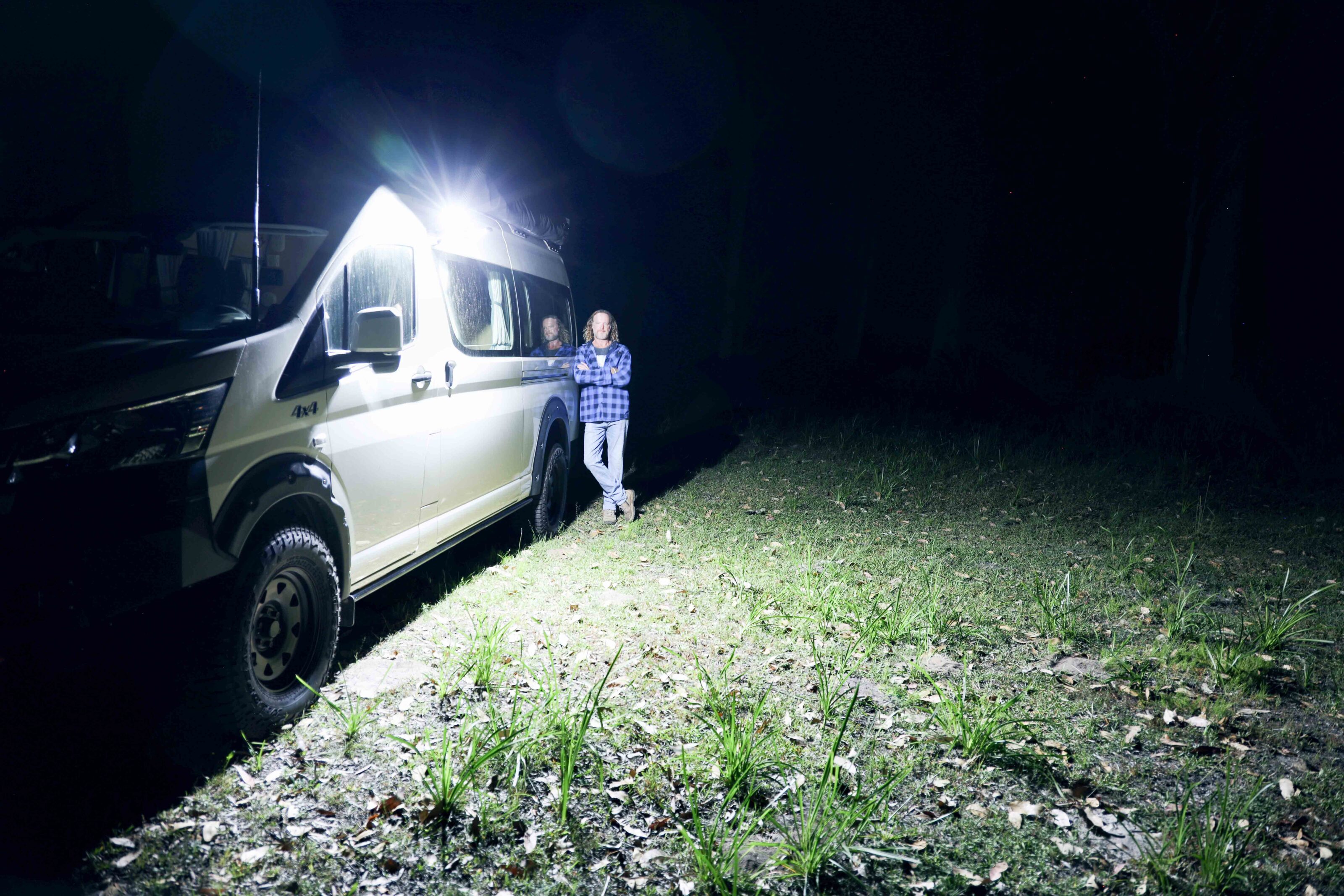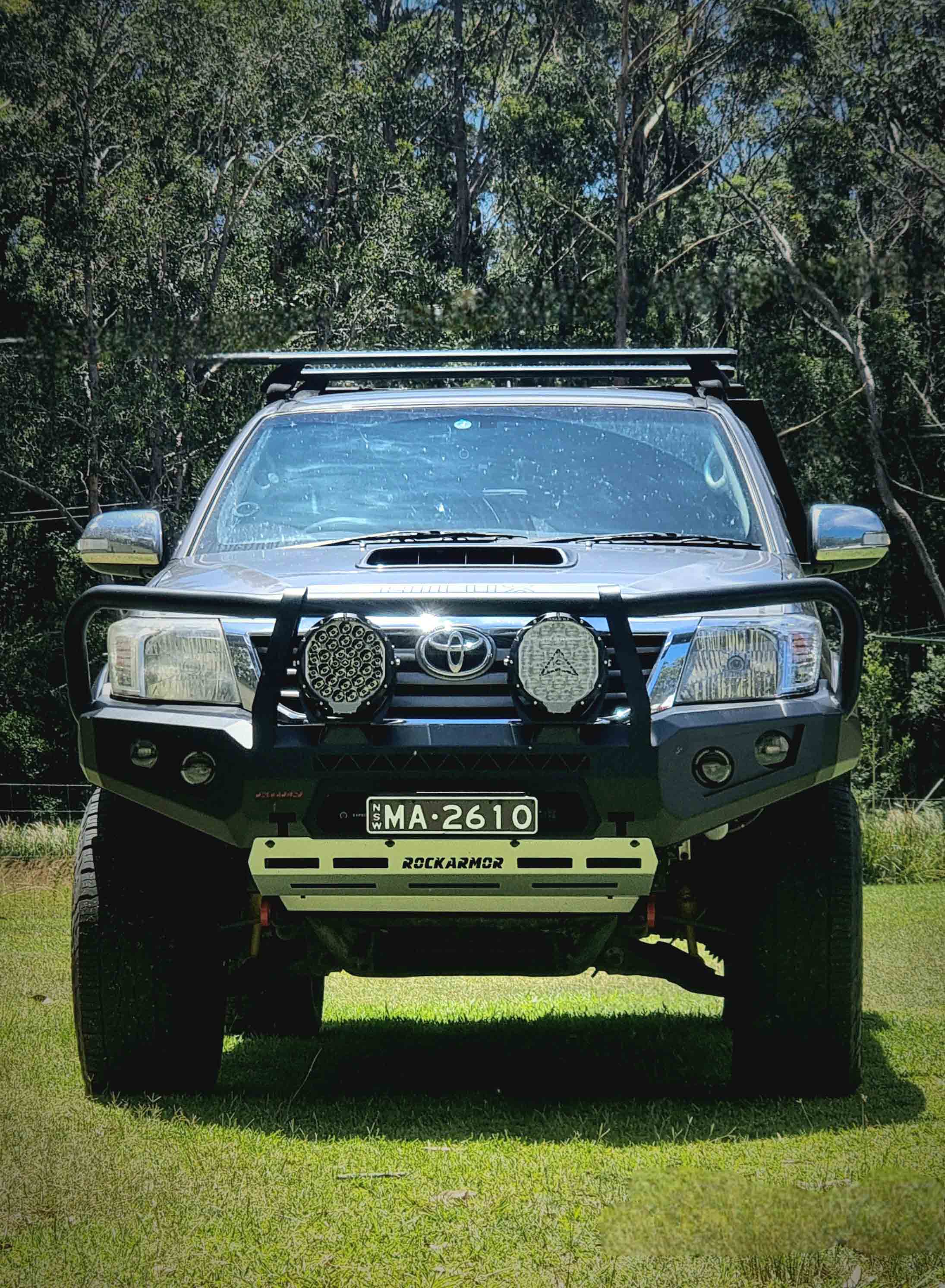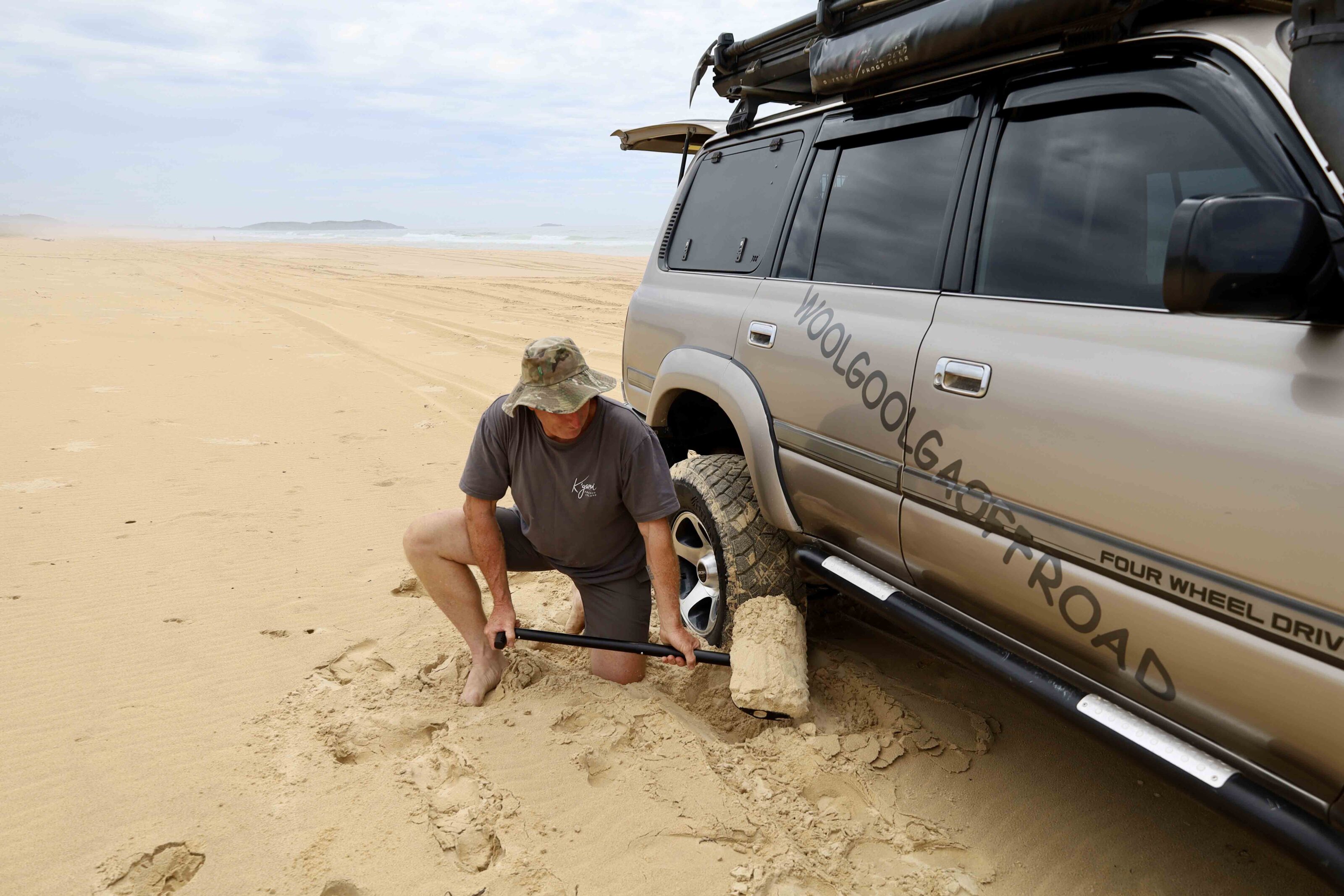DIESEL and petrol engines work in arcs, building momentum with the engine’s RPM before petering off as the engine loses steam.
In every vehicle ever built with an automatic or manual transmission, engineers have laboured over power figures, making a perfect combination of transmission ratios and diff gears to give us usable power at every speed we’re likely to drive – from low-down grunt through to fuel-sipping low-rpms at freeway speeds.
We then go and bugger it all up by putting larger tyres on because, hey, we’re off-roaders and we spend half the time modifying our vehicles to make them better. Luckily, out of all the problems we cause for ourselves, the performance losses fitting larger tyres is one of the easiest to fix.
How to change your differentials oil?
Diff gears might seem incredibly complicated, but they’re one of the simplest components in any 4×4 and are surprisingly easy to get right. In their basic form they’re used to redirect the drive coming from your engine and transmission through to your wheels.
It does this by using what’s known as a ring and pinion gear arrangement, where the pinion gear, attached to the driveshaft, runs along the edge of the ring gear which is attached to the axles and eventually the wheels. Due to this design, the pinion and driveshaft need to spin significantly faster than the ring gear and axle, hence this is where we get diff ratios from.
In a typical Land Cruiser it’ll be a ratio of 4.1:1, where the driveshaft turns 4.1 times for every one revolution of the wheels. The benefit of this is it gives the driveline 4.1 swings of the hammer to turn the tyres once. The more the engine can turn for every revolution of the tyres, the more power it’s able to put down and the higher it’ll rev. Keeping this balance right is the key to a 4×4 having plenty of power throughout all driving situations, without destroying fuel economy in the process.
To help get to the nuts and bolts of gears and ratios we’ve enlisted the help of two men with gears for brains: Carl Montoya from world-renowned Nitro Gear & Axle in the USA, and Owen Honess from Western Manual Gearbox & Diffs in Sydney.
YOU’VE ALREADY CHANGED YOUR GEARING WHEN you start the conversation regarding gearing, a lot of people instantly glaze over and chalk it up as a rock-crawler modification and something that doesn’t impact them.
“It’s a really common misconception that re-gearing is for more hardcore vehicles with huge tyres and off-road use,” Carl told us. “Contrary to that, most of the newest vehicle models benefit from gears the most.”
Before a single panel is pressed for a new vehicle, teams of engineers will get out their slide rules and dyno read-outs to work out what RPM the engine should be sitting at for a given speed – to maximise usable performance and fuel consumption. To work this out they’ll take into account every gear ratio through the transmission, diff gears, transfer case and also the diameter of the tyres.
When you swap out the stock tyres for a set of 33s you can change the gearing by as much as seven per cent, dropping the engine out of that optimum RPM range with a whole host of negative results thrown into the mix.
In older vehicles, where fuel economy was a communist term, it wasn’t an issue as they were generally designed with plenty of leeway in either direction. Modern vehicles keep the RPMs as low as possible without the engine labouring to get maximum fuel efficiency. “With the added weight of aftermarket accessories such as camping gear, bumpers and roof racks, the vehicle no longer feels ‘right’ when you drive them.” Carl added.
“When a slightly larger tyre is fitted the RPMs are reduced below a tolerable amount, causing constant downshifting.” For context, the results of stepping up to a 33-inch tyre from a 30.8-inch stock tyre are similar to swapping out a set of 4.1:1 ratio diff gears for a set of 3.8s, or like strapping a set of 60mm clogs to your feet then trying to run with a backpack full of concrete.
THE HIDDEN DANGERS JOE Bloggs buys a late-model 4×4, loads it up with every piece of camping gear he can find online, hitches up a QE2-sized camper trailer, and then swaps out the tyres for a set of meaty muddies. Unsurprisingly, when old Joe goes to mash the loud pedal not a whole lot happens. Now, Joe might start thinking he needs to push the pedal harder or get some performance upgrades under the bonnet, but that doesn’t solve the underlying issue.
By throwing out the gearing you’re essentially increasing the load the drivetrain sees, it’s a little like moving the pivot point of a see-saw. The actual weight doesn’t change, but things become a whole lot more lop-sided with Joe’s driveline copping the brunt of it.
4×4 Vehicle Loading and GVM explained
“Overloading the clutch is one of the big issues I see all the time,” Owen said. “You’ll need to increase engine revs just to take off, which can cause the clutch to shudder.” While the negative effects are immediately obvious with a manual gearbox, automatic transmissions hide theirs better, still driving how you’d expect them to with only the slightly higher RPMs under acceleration hinting towards the overheating gearbox and failing torque convertor.
At cruising speeds, both manual and automatic transmissions will often be in between gears, where fourth is too low but fifth is too high, causing constant downshifting as the engine labours in top gear (or excessive RPM, increased engine noise and fuel consumption that comes from staying in a lower gear). The engine labouring can lead to overheating issues as well. Now, this doesn’t mean Joe Bloggs is going to eject his engine and gearbox the first time he hits the beach, but they will be under increased load.
Ironically enough, an area few people consider when fitting larger tyres is how it will affect their off-road performance. Yes, larger tyres will give you the extra ground clearance you’re after, but the reduction in gearing will effectively neutralise the benefits of low-range and kill engine braking downhill – the 4×4 version of robbing Peter to pay Paul.THE RIGHT GEAR THERE are no two ways about it – if you’ve fitted larger tyres to your 4×4, re-gearing will take the load off your engine and drivetrain as well as make it perform better both on- and off-road. “Many people live with it and think they don’t need to re-gear, but every person that does re-gear is happier.” Carl added. The upside is for around the price of a half-decent bullbar you can fix most of the issues caused by larger tyres, all that’s left to do is work out what options are going to suit your needs.
The easy solution is to speak to the experts like Carl and Owen, let them know your needs, and they’ll figure it out. For those a little more hands-on, the process is rather simple depending on the vehicle. On many older 4x4s a metal compliance plate under the bonnet would have an axle code, often telling you the ring gear size, axle ratio and how many spider gears inside the diff. Modern 4x4s have replaced that plate with a sticker that tells you nothing, which may complicate things.
Regardless, all the axle ratio tells us is how many times the driveshaft will spin for one revolution of the wheel, so jack the rear-end up, spin a tyre 10 times with the other chocked, and count how many times the driveshaft spins. If you have a 4.1 ratio it should either spin 41 times or 20.5 times depending on if you have an LSD or not. From here work out how much larger your tyres are than stock and then increase your ratios to get you back to stock gearing.
The final piece of the puzzle is to talk to the experts about what you’re trying to achieve: performance or fuel economy. “If you’re chasing fuel savings it’s something we can definitely do,” Owen said. “If you do a lot of highway cruising we’ll work out the RPM you want to sit at for highway speeds for the best fuel consumption, and what ratio is going to get you there.”
Unfortunately, gear manufacturers only make ratios in specific intervals, so you’re often stuck smack-bang in between two options. If you’re loaded up with accessories it’s almost never a bad idea to opt for the slightly higher ratio than the slightly lower version. If you need a 4.69 and can only get a 4.88 it’ll have you revving at 2288rpm at 110km/h instead of 2200 flat, hardly enough to worry about.
DIFFERENT STROKES SOME companies, like Marks 4WD, offer transfer case gears that can achieve a few positive outcomes.
The first is a lower low-range, generally in the vicinity of a 50 per cent reduction, which will make up for any increase in tyre size. The second positive thing they can do is change the high-range ratios.
In 4x4s that rev too high on the open road, an overdrive set-up of up to 10 per cent can be enough to settle RPMs at or around 100km/h and help with economy. Or in modified versions with larger tyres, up to a 10 per cent underdrive arrangement can help correct for larger tyres. It’s a more limited option and not available for many 4x4s, but it can fix the gearing from larger tyres while also giving you better crawling ability off-road with more engine braking for a similar cost as re-gearing front and rear axles.
GET IT RIGHT THE FIRST TIME THE bitterness of poor quality remains long after the sweetness of low price. It’s a saying never more true than with today’s current crop of so-called budget-friendly modifications.
However, as with most things, saving a dollar now will often cost you 10 later. There are two things to consider when re-gearing your 4×4. The first is the quality of the gears themselves, the second is the quality of the installer. Quality gears will not only be made of stronger materials than budget options, they’ll generally be more precise and make the installer’s job far easier.
The better the gears mesh and the more contact surface between the ring and pinion gears, the stronger the connection and the less likely you are to break them. “Some gears can look brilliant,” Owen added. “But when you set them up they’re impossible to get to mesh right. It really depends on who’s making them and where they come from. You get what you pay for.”
If you’re looking at re-gearing your 4×4 it’s worth eyeing off a diff lock or two while you’re at it. With the diff centres out and gears needing to be installed anyway, it’s a negligible price difference to get them in now. It’ll bump the total price up to around the $5000 mark for the full job, but for around the same price as decent bar work you’ll have a 4×4 that’ll tow better, accelerate better, use less fuel, handle steep hills better, and be nigh-on unstoppable in the bush.
CONTACTS Western Manual Gearbox and Diffs PH: (02) 4732 1800
Nitro Gear and Axle WEBSITE: www.nitro-gear.com





